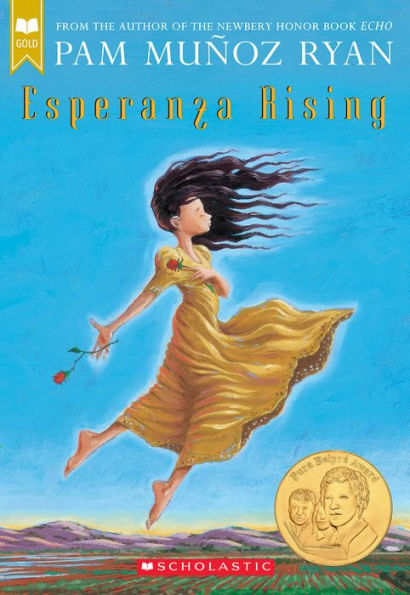Awards and Praise for Esperanza Rising:
Pura Belpré Award Winner
Américas Award Honor Book
Jane Addams Children's Book Award Winner
Willa Cather Award Winner
Los Angeles Times Book Prize Finalist
ILA Notable Book for a Global Society
ALA Top Ten Best Books for Young Adults
New York Public Library 100 Titles for Reading and Sharing
A Publishers Weekly Best Book of the Year
Children's Literature Legacy Award Winner
* "Told in a lyrical, fairy tale-like style . . . Readers will be swept up." —Publishers Weekly, starred review
* "This well-written novel belongs in all collections." —School Library Journal, starred review
"Ryan writes a moving story in clear, poetic language that children will sink into, and the book offers excellent opportunities for discussion and curriculum support." —Booklist
"Ryan's... style is engaging, her characters appealing, and her story is one that-though a deep-rooted part of the history of California, the Depression, and thus the nation-is little heard in children's fiction. It bears telling to a wider audience." —Kirkus Reviews
"With a hint of magical realism, this robust novel set in 1930 captures a Mexican girl's fall from riches and her immigration to California," said PW in our Best Books citation. Ages 8-12. (June) Copyright 2002 Cahners Business Information.
Gr 6-9-Inspired by her grandmother's immigration stories, Pamela Mu-oz Ryan (Scholastic 2000) offers valuable glimpses of the lives of Mexican-American farm workers during the Depression. When her father dies, 13-year-old Esperanza and her mother are forced to abandon their privileged lives and move to California. At first the proud girl is appalled that they must share a cramped row house and work at menial jobs, but when her mother becomes gravely ill, she learns the value of generous friends and her own inner resources. This coming-of-age story also looks at the economic and social issues of that era, and the author's note adds valuable factual information. Trini Alvarado's narration is adroit and melodic as she handles text that skillfully intersperses Spanish phrases and songs. Pairing this story with Zilpha Keatley Snyder's Cat Running (Delacorte, 1994) will give listeners broader insights into the difficulties of the 1930's. This recording is a solid choice for all elementary and middle school audiobook collections, and a necessity for libraries serving Spanish-speaking populations.-Barbara Wysocki, Cora J. Belden Library, Rocky Hill, CT Copyright 2001 Cahners Business Information.
The author of Amelia and Eleanor Go for a Ride (1999) and Riding Freedom (1997) again approaches historical fiction, this time using her own grandmother as source material. In 1930, Esperanza lives a privileged life on a ranch in Aguascalientes, Mexico. But when her father dies, the post-Revolutionary culture and politics force her to leave with her mother for California. Now they are indebted to the family who previously worked for them, for securing them work on a farm in the San Joaquin valley. Esperanza balks at her new situation, but eventually becomes as accustomed to it as she was in her previous home, and comes to realize that she is still relatively privileged to be on a year-round farm with a strong community. She sees migrant workers forced from their jobs by families arriving from the Dust Bowl, and camps of strikers—many of them US citizens—deported in the "voluntary repatriation" that sent at least 450,000 Mexicans and Mexican-Americans back to Mexico in the early 1930s. Ryan's narrative has an epic tone, characters that develop little and predictably, and a romantic patina that often undercuts the harshness of her story. But her style is engaging, her characters appealing, and her story is one that—though a deep-rooted part of the history of California, the Depression, and thus the nation—is little heard in children's fiction. It bears telling to a wider audience. (author's note) (Fiction. 9-15)Sills, Leslie IN REAL LIFE: Six Women Photographers Holiday House (80 pp.) Oct. 15, 2000





